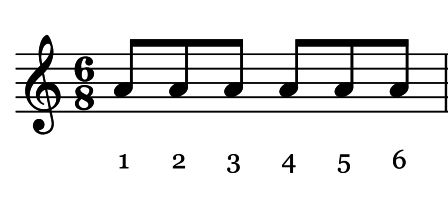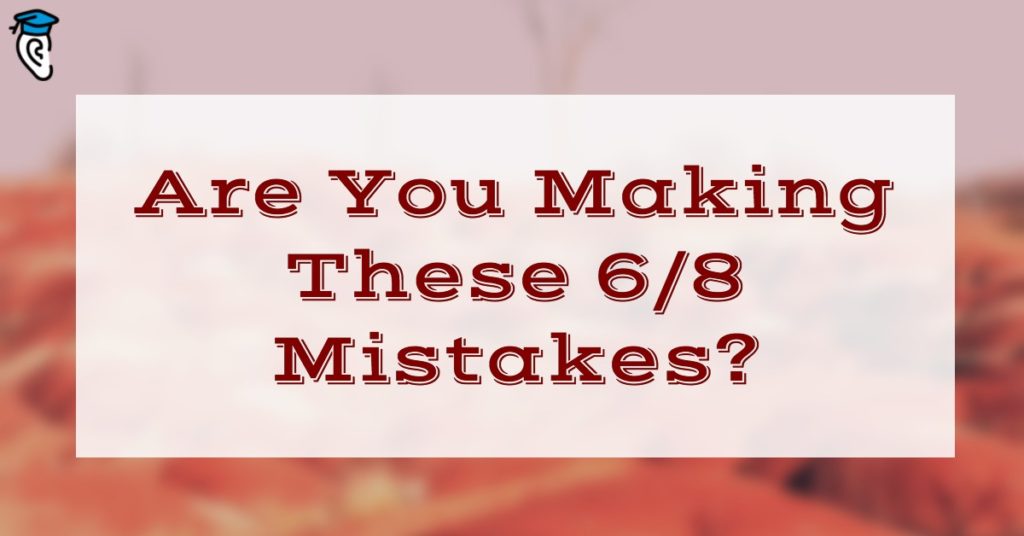6/8 is a popular time signature in music. It seems simple enough: six eighth-note beats per bar. However, musicians often struggle to recognise or play 6/8.
There are six common mistakes musicians make with 6/8. Learn about them and you’ll be able to avoid them yourself.
This is a summary post.
→ Read the full guide
Mistake 1: Ignoring it.
6/8 is actually one of the most common time signatures in popular music. We tend to assume pop and rock is in 4/4, but 6/8 is used surprisingly often too.
Many musicians struggle to count or play the 6/8 time signature. The theory can also be confusing, especially comparing with 3/4 or 2/4. As a result they avoid or ignore 6/8. Don’t let that happen to you!
Mistake 2: Not knowing how to count it.
There are two different ways you can count a 6/8 time signature:
- Count it as 6 eighth note beats.

- Count as 2 dotted-quarter note beats.

Practice counting bars in both of these ways before you try applying your 6/8 skills to real music.
Mistake 3: Confusing 6/8 with 2/4
You can count 2/4 as two beats per bar, just like 6/8. This causes some people to mix them up. Here’s the difference:
- In 2/4 you subdivide each beat into two parts (“1 and, 2 and”)
- In 6/8 you subdivide each beat into three parts (“1 and ah, 2 and ah”)
Mistake 4: Confusing 6/8 with 3/4
Similarly, you can count 3/4 as six eighth notes, just like 6/8. Some people mix up 3/4 and 6/8 as a result. There’s a difference though:
- In 3/4 you subdivide each of three beats into two eighth notes (“1 and, 2 and, 3 and”)
- In 6/8 you subdivide each of two beats into three eighth notes (“1 and ah, 2 and ah”)
Mistake 5: Not spotting 6/8
Can you spot a song in 6/8 when you hear it? There are a few things you can listen for.
Songs with a 6/8 beat have a lilting waltz feel, a bit like 3/4. Ask yourself if it sounds like a waltz where all the bars are in pairs. Or does it sound like 6 beats to a bar where the first and fourth are emphasised? It could also sound like 2 beats to a bar – but each beat sounds a bit like a triplet. These are all clues that it’s in 6/8.
Don’t make these 6/8 mistakes!
As a musician you must be familiar with 6/8 time and by avoiding the mistakes above you’ll be well equipped to handle it when you encounter it.
Listen to 6/8 song examples (there are lots here) and practice playing music that’s in 6/8. If you like writing music, try creating something in 6/8 yourself. Soon you will have internalised the feel of 6/8 and it will be easy to recognise by ear in future.








